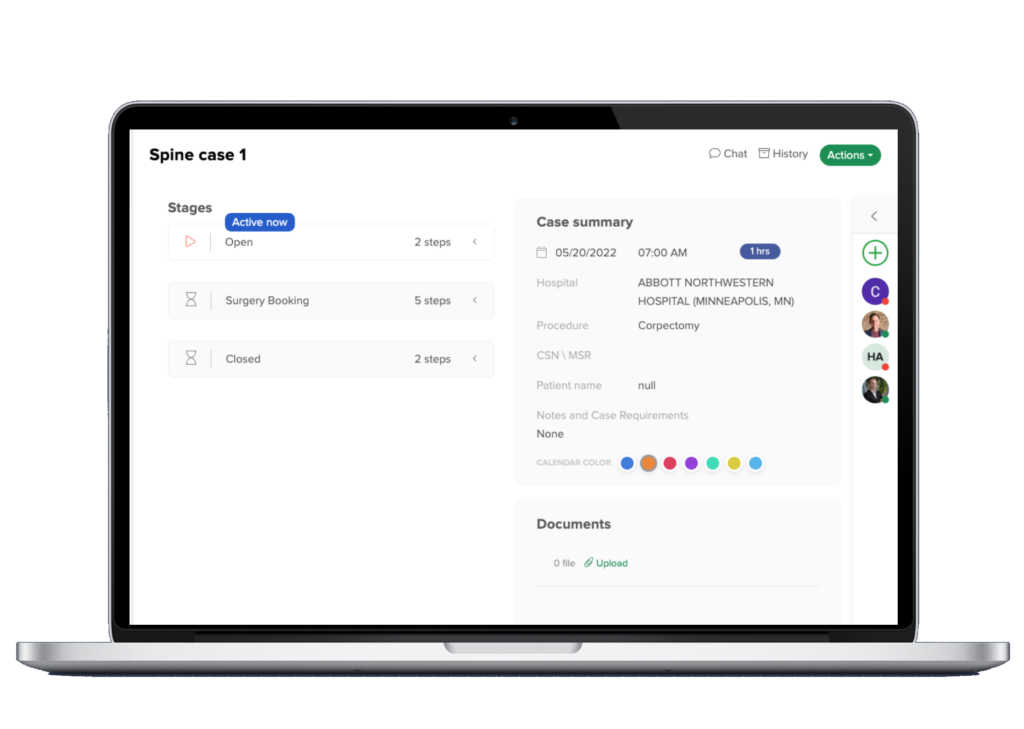Introduction
In the era of rapid digital transformation, electronic communication has become an indispensable part of our daily lives. This is particularly true in the healthcare industry, where healthcare providers and patients heavily rely on electronic communication for swift and efficient communication. However, the rise of electronic communication has also led to an increasing concern for the security and privacy of sensitive patient information. This is where HIPAA-compliant communication comes into play. In this article, we will discuss how to use HUB for HIPAA-compliant communication, ensuring the security and privacy of patient information.
The importance of HIPAA-compliant communication cannot be overstated. With the increasing number of cyber threats and data breaches, it is crucial for healthcare providers to ensure that their communication methods are secure and compliant with HIPAA regulations. By using HUB for HIPAA-compliant communication, healthcare providers can not only protect sensitive patient information but also improve their communication efficiency.
Understanding HIPAA-Compliant Communication
Before we delve into the specifics of how to use HUB for HIPAA-compliant communication, it is crucial to understand what HIPAA-compliant communication entails. HIPAA, an acronym for the Health Insurance Portability and Accountability Act, was enacted in 1996 to safeguard the privacy and security of patient information. HIPAA-compliant communication refers to the use of secure and encrypted methods of communication to transmit sensitive patient information. This includes electronic communication such as emails, text messages, and video conferencing.
Understanding HIPAA-compliant communication is not just about knowing the definition. It’s about understanding the importance of protecting patient information and the potential consequences of not doing so. HIPAA violations can result in hefty fines and damage to a healthcare provider’s reputation. Therefore, it’s crucial for healthcare providers to ensure their communication methods are HIPAA-compliant.
Why Is HIPAA-Compliant Communication Important?
HIPAA-compliant communication is of paramount importance for healthcare providers and patients for a multitude of reasons. Firstly, it ensures the privacy and security of sensitive patient information, such as medical records, test results, and treatment plans. This is essential to maintain patient trust and confidentiality. Secondly, HIPAA-compliant communication helps healthcare providers comply with HIPAA regulations and avoid potential penalties for non-compliance. Lastly, it allows for efficient and timely communication between healthcare providers and patients, improving the overall quality of care.
HIPAA-compliant communication is not just about protecting patient information. It’s also about improving the quality of healthcare services. By ensuring secure and efficient communication, healthcare providers can provide better care to their patients. For instance, secure messaging can allow healthcare providers to quickly share test results or treatment plans with their patients, leading to faster decision-making and improved patient outcomes.
Using HUB For HIPAA-Compliant Communication
HUB is a secure and HIPAA-compliant communication platform designed specifically for the healthcare industry. It offers a range of features that make it an ideal choice for healthcare providers and patients looking for a secure and efficient way to communicate. Here’s how to use HUB for HIPAA-compliant communication:
1. Sign Up For HUB
The first step to using HUB for HIPAA-compliant communication is to sign up for an account. You can do this by visiting the HUB website and clicking on the “Sign Up” button. You will be prompted to enter your email address, name, and create a password. Once you have completed the sign-up process, you will have access to your HUB account.
Signing up for HUB is a straightforward process. However, it’s important to ensure that the information you provide during the sign-up process is accurate. This is because this information will be used to verify your identity and ensure the security of your account. Also, make sure to create a strong password to further enhance the security of your account.
2. Add Your Contacts
The next step is to add your contacts to your HUB account. This includes your patients, other healthcare providers, and any other individuals you need to communicate with regarding patient information. You can add contacts by clicking on the “Contacts” tab and then selecting “Add Contact.” You will need to enter their name, email address, and select their role (patient, healthcare provider, etc.). Once you have added your contacts, you can easily communicate with them through HUB.
Adding contacts to your HUB account is not just about entering their information. It’s also about organizing your contacts in a way that makes communication more efficient. For instance, you can categorize your contacts based on their role or the type of communication you usually have with them. This can make it easier for you to find and communicate with your contacts.
3. Send Secure Messages
HUB allows you to send secure messages to your contacts, ensuring the privacy and security of patient information. To send a secure message, click on the “Messages” tab and then select “New Message.” You can then select the recipient, enter the subject and message, and attach any necessary files. HUB uses end-to-end encryption to protect the contents of your messages, making it a secure way to communicate.
When sending secure messages through HUB, it’s important to ensure that the information you’re sharing is accurate and up-to-date. Also, make sure to use clear and concise language to avoid any misunderstandings. Remember, secure messaging is not just about protecting patient information. It’s also about improving communication efficiency and accuracy.
4. Schedule Video Conferences
HUB also offers the option to schedule video conferences with your contacts. This is a great way to have face-to-face communication with patients or other healthcare providers while still maintaining HIPAA compliance. To schedule a video conference, click on the “Video Conferences” tab and then select “Schedule Conference.” You can then select the participants, date, and time for the conference. HUB uses secure video conferencing technology to ensure the privacy and security of the conference.
Scheduling video conferences through HUB is not just about setting a date and time. It’s also about preparing for the conference and ensuring that all participants have the necessary information and resources to participate in the conference. For instance, you might need to share relevant files or information with the participants before the conference.
5. Share Files
In addition to secure messaging and video conferencing, HUB also allows you to share files with your contacts. This is useful for sharing medical records, test results, and other sensitive patient information. To share a file, click on the “Files” tab and then select “Upload File.” You can then select the file from your computer and choose who you want to share it with. HUB uses encryption to protect the files during transmission and storage.
When sharing files through HUB, it’s important to ensure that the files are accurate and up-to-date. Also, make sure to verify the recipient’s identity before sharing sensitive information. Remember, file sharing is not just about transmitting information. It’s also about ensuring the accuracy and integrity of the information.
Best Practices For HIPAA-Compliant Communication
While using HUB for HIPAA-compliant communication is an excellent step towards ensuring the security and privacy of patient information, there are also some best practices to keep in mind:
- Always use strong and unique passwords for your HUB account.
- Avoid using public or unsecured Wi-Fi networks when accessing HUB.
- Regularly update your HUB account and software to the latest versions.
- Do not share your HUB login information with anyone.
- Use caution when sharing files or information through HUB and verify the recipient’s identity before sending sensitive information.
These best practices are not just about following rules. They’re about creating a culture of security and privacy within your organization. By implementing these best practices, you can not only protect patient information but also improve the overall security of your organization.
Conclusion
In conclusion, HIPAA-compliant communication is crucial for healthcare providers and patients to protect the privacy and security of sensitive patient information. HUB offers a secure and efficient way to communicate, making it an ideal choice for HIPAA-compliant communication. By following the steps outlined in this article and implementing best practices, you can ensure the security and privacy of patient information while using HUB for electronic communication.
HIPAA-compliant communication is not just a requirement. It’s a commitment to protecting patient information and improving the quality of healthcare services. By using HUB for HIPAA-compliant communication, you can fulfill this commitment and provide better care to your patients.
How HUB Healthcare Can Help
HUB Healthcare offers a comprehensive solution designed to enhance communication in healthcare, streamline care coordination, and improve overall workflow efficiency. Our platform includes features such as medical case management software, healthcare document management, and healthcare analytics to ensure that all aspects of patient care are optimized. By leveraging HUB Healthcare’s robust tools, organizations can reduce workflow bottlenecks, automate repetitive tasks, and facilitate better collaboration among healthcare providers. This not only improves work quality but also enhances patient outcomes, making HUB Healthcare an essential partner in achieving healthcare excellence. Coordinated care
Visit our help center here – Link






